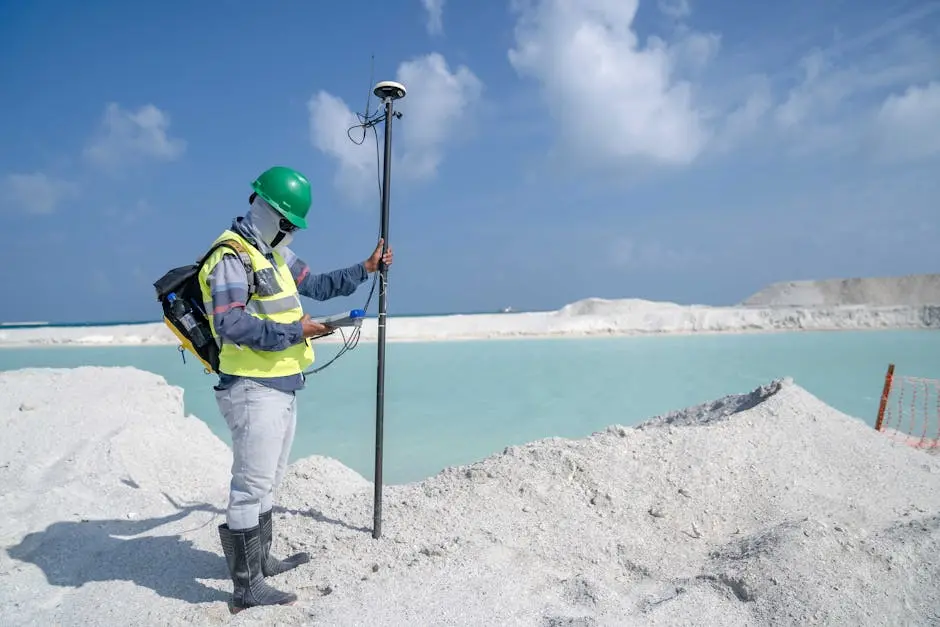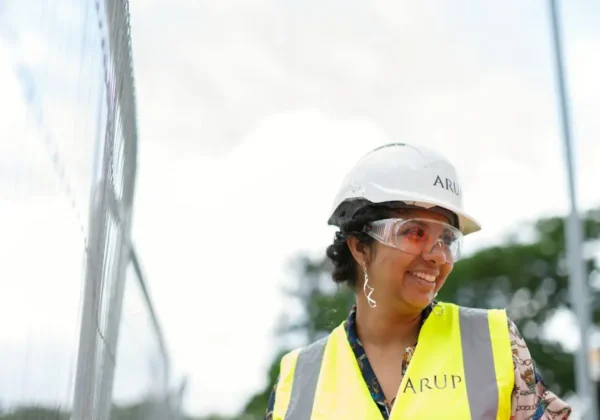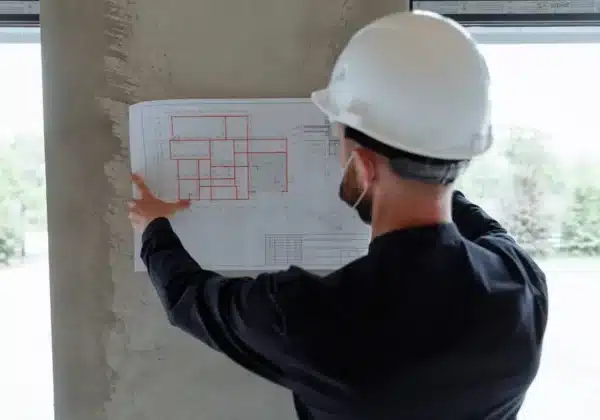Topographical surveys are essential in the construction industry, providing a detailed understanding of the terrain where a project will unfold. This guide will walk you through the basics of topographical surveys, their importance, and how they play a crucial role in successful construction projects.
What is a Topographical Survey?
A topographical survey is a detailed and accurate graphic representation of the surface features of a piece of land. This includes natural features such as terrain elevations, as well as man-made structures. These surveys provide precise measurements that are crucial for project planning in construction. Unlike traditional maps, topographical surveys give you a three-dimensional viewpoint of the landscape, capturing every bump and trough that might affect a new build. The advantages of having such detailed information are immense, as it allows developers to foresee potential issues and plan accordingly. This proactive approach means projects can be designed with confidence, knowing that the underlying terrain has been thoroughly understood.
Incorporating the Ultimate Guide to Topographical Surveys reveals the extensive benefits of this detailed mapping process which is indispensable for various sectors. Historical maps primarily focused on two-dimensional layouts, leaving much to interpretation regarding elevations or specific land features. The modern approach eliminates this guesswork. By using high-tech equipment and methodologies, surveyors today ensure that each aspect of the landscape is measured and recorded with precision. This enables engineers to visualize and manipulate potential construction scenarios before any groundwork begins, which is particularly beneficial when dealing with uneven or challenging terrains.
Why Topographical Surveys Matter in Construction
Topographical surveys are vital because they offer the information needed to design and develop infrastructure that harmonizes with the existing terrain. They help identify potential challenges, such as uneven elevations, that could impact construction plans and budgets. For instance, discovering a slope where a clean, flat foundation is needed can significantly alter a project’s timeline or cost without a detailed survey to highlight it beforehand. Additionally, these surveys make it possible to predict and implement drainage systems more effectively, which are often overlooked until water issues arise. Addressing these potential pitfalls early in the planning phase can prevent unexpected challenges that could disrupt a project later on.
The value of a topographical survey extends beyond merely identifying physical features. It empowers decision-makers with data that can lead to better, more efficient designs. The survey data helps architects and urban planners to integrate buildings seamlessly into the local topography, retaining aesthetic harmony while maximizing functionality. For developers, a detailed understanding of the land’s features allows for smarter resource allocation and minimizes the risk of unforeseen obstacles delaying a project’s progress. In an age where sustainability and efficiency are paramount, utilizing this data becomes a competitive advantage in developing resilient and sustainable urban areas.
The Tools Used in Topographical Surveys
Modern topographical surveys utilize a variety of tools and technologies including GPS, drones, and total stations. These tools help surveyors gather accurate data over large areas quickly and efficiently, enabling precise mapping. A GPS device allows surveyors to pinpoint exact locations with high accuracy, ensuring the mapping data is reliable. Drones, equipped with advanced imaging capabilities, can chart vast and previously inaccessible areas, capturing topographical data from a bird’s-eye view. This technology revolutionizes how we understand the terrain, offering comprehensive images that translate into detailed maps. Total stations integrate these technologies, augmenting precision through electronic distance measurement.
The advent of new technology has significantly enhanced the quality and scope of topographical surveys. Previously labor-intensive and time-consuming, the use of drones has streamlined the process, allowing for faster data collection without compromising on accuracy. Similarly, LiDAR (Light Detection and Ranging) sensors have become increasingly popular. These tools measure the distance from the sensor to the earth’s surface with laser pulses, creating 3D topographical maps that capture intricate details of the landscape. Such advanced technologies have enabled engineers and planners to work smarter, ensuring that no detail is overlooked when designing infrastructure that must endure and adapt to environmental challenges.
Steps Involved in Conducting a Topographical Survey
Conducting a topographical survey involves several key steps: planning the survey, gathering data, processing the data, and finally, creating detailed maps and reports that will guide construction projects. The initial phase involves a thorough study of existing maps and any available geographical data. This helps in outlining the specific areas that need further exploration. Once the groundwork is done, the surveyors move to the site armed with cutting-edge technology like drones and total stations, meticulously capturing every significant detail of the terrain. This step is crucial for amassing the raw data that will form the backbone of their analysis.
In the data processing phase, information gathered from the field is meticulously analyzed to produce coherent, usable data sets. Advanced software is employed to convert this raw data into comprehensive topographical maps and models. These maps go beyond simple elevation layouts; they include contour lines, indicate potential flood zones, and even represent man-made features like roads and buildings accurately. At this point, the data not only informs but also anticipates potential challenges, helping planners devise strategies that are practical and cost-effective. This systematic method ensures that every dimension of the land is considered, reducing the risk of costly oversights during construction.
Interpreting Topographical Survey Data
Interpreting the data from a topographical survey is a critical skill for construction engineers and architects. Understanding contour lines, elevation points, and other features enables professionals to make informed decisions regarding design and construction. For those new to the field, learning to read these intricate maps might seem daunting at first, but with practice, it becomes an invaluable asset. Contour lines can tell engineers where their cranes should operate or where extra supporting structures might be required. Additionally, recognizing elevation changes can inform the need for retaining walls or flood prevention measures, ensuring the integrity and safety of any built environment.
To aid in this interpretation, various levels of detail in topographical surveys allow for different applications. When considering how to use a topographical survey, it’s important to recognize that the information is only as good as its analysis. A simple contour map could provide an overview, while detailed 3D models offer an immersive understanding of the land’s intricacies. For urban planners, this data supports strategic decisions such as zoning, utilities placement, or environmental impact assessments. As technology advances, software capable of simulating potential outcomes based on topographical data further enhances planning precision, minimizing risks and uncertainties that could delay developments.
Common Challenges in Topographical Surveys
Even with advanced tools, surveyors can encounter challenges such as adverse weather conditions, difficult terrain, and accessibility issues. Being prepared to address these challenges is essential for accurate and timely surveys. Weather fluctuations, such as heavy rain or strong winds, can disrupt fieldwork and delay data collection. Similarly, areas with dense vegetation or steep landscapes pose difficulty for both traditional ground surveys and drone operations. Moreover, remote locations might not have proper infrastructure to accommodate high-tech equipment, requiring innovative solutions from surveyors to gather necessary data without compromising safety or accuracy.
Despite these obstacles, topographical surveys remain indispensable. It’s crucial for survey teams to have contingency plans in place. One strategy is scheduling surveys during optimal weather windows to avoid disruptions. Additionally, investing in robust software and equipment ensures that operations are flexible enough to adapt to various conditions. Another consideration is deploying a team with diverse expertise, which can mitigate the effects of unforeseen issues. Lastly, collaboration with landowners and local authorities can prove invaluable, offering insights and support that streamline the surveying process in challenging environments. In essence, foresight and adaptability are key to overcoming these common hurdles and achieving accurate survey results.
Final Thoughts on Topographical Survey Importance
Understanding topographical surveys makes a significant difference in the planning and execution of construction projects. By familiarizing yourself with these essential elements, you can ensure a solid foundation for your project, leading to more efficient and successful outcomes.




